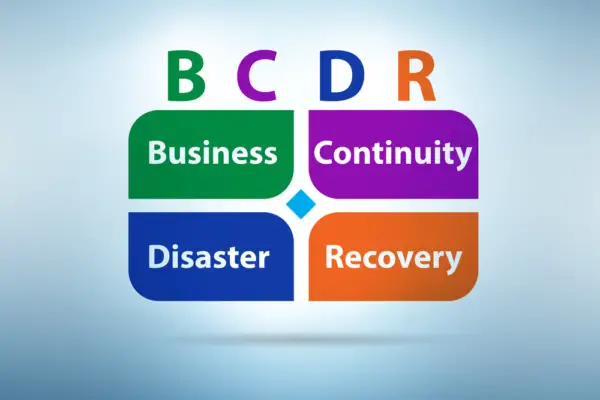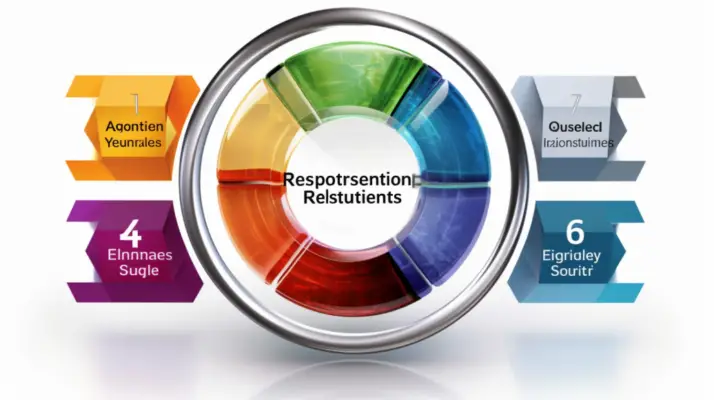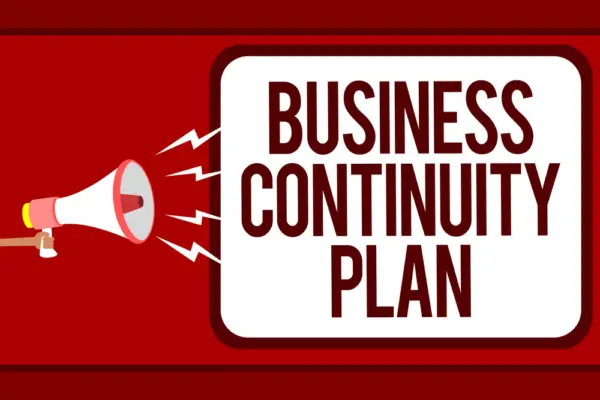Get a human resources business continuity plan template to protect your business. Learn how to create a full plan, including HR policies for working from home and testing.
Make sure your team is ready and learn best practices for business continuity. Find out the key components and HR’s role in the plan. Protect your business with a well-thought-out contingency plan.
Quick Links
- HR-specific procedures in the BCP.
- HR’s role in crisis management.
- HR policies for working from home.
- Employee support strategies.
- Test HR in BCP.
What is Business Continuity Planning?
Business Continuity Planning is developing a full plan to ensure business can continue during crises. It focuses on maintaining normal business operations during and after a crisis to ensure the organization remains functional.
It includes procedures for managing human resources, assets, and communication.
Having a Business Continuity Plan in place helps organizations navigate the unexpected, ensure business continuity, and protect their people.

Definition and Purpose of Business Continuity Planning
Creating procedures to keep business running during disasters or unexpected events is the purpose of business continuity planning.
This planning creates a business continuity plan (BCP) to ensure critical business functions and business processes can continue during disruption.
A business impact analysis is done to identify what needs to be protected. HR plays a key role in business continuity by supporting employees and keeping them safe. Contingency plans are developed to address potential crises in crisis management.
Unlike disaster recovery planning (DRP), which is about restoring operations after a disaster, business continuity planning is about keeping business running as usual. Organizations can navigate the unexpected and protect their people and key operations with a business continuity plan.
Benefits of a Business Continuity Plan
A well-thought-out business continuity plan is critical to keep business running and your employees safe in times of crisis. By having a business continuity plan in place, you can minimize disruption to business, support your employees and maintain business continuity.
In the event of a crisis like a natural disaster, having a plan in place means your employees are safe, and business operations can continue with minimal disruption. This proactive approach protects your employees, helps your organization navigate the challenge, and reduces the impact on your business.
Business continuity planning is key to keeping business running and your employees safe during times of uncertainty.
What is Business Continuity
Understanding business continuity involves doing an impact analysis to identify critical business functions and processes. This analysis helps organizations prioritize resources and develop strategies to maintain business during disruption.
Impact Analysis for Business Continuity Planning
Do a full business impact analysis to develop a business continuity plan to respond to disruption and prioritize response.
By doing a full business impact analysis, you can see how a disaster or unexpected event could stop your business. This analysis helps you prioritize when responding to disruption.
Organizations that have done their impact analysis are better equipped to navigate the unexpected and reduce the impact on their business.
Taking the time to understand the impact on your business and develop response strategies based on this analysis is a proactive approach to business continuity in crisis.
Critical Business Functions and Processes
To keep business running, HR teams need to identify and prioritize the critical business functions and processes that are required by the organization.
By doing an impact analysis, HR teams can assess the impact of disruption, such as natural disasters and data breaches, on these key functions.
Identifying critical business functions means resources are allocated to keep the business running during a crisis.
HR teams are part of this process, working with other departments to determine the most critical functions for business continuity.
This proactive approach allows businesses to develop strategies and plans to mitigate risk and build resilience to the unexpected.
Business Continuity Plan for HR
When developing a business continuity plan for HR, consider the critical components that will keep operations running during a crisis.
A business continuity plan checklist will help you identify areas such as impact analysis, resource allocation, and operational continuity measures.
Business Continuity Plan
Include risk assessment, critical business functions, and risk management strategies to underpin your business continuity plan.
Identify the risks that could impact human resources, such as natural disasters, cyber-attacks, or pandemics. Identify the critical HR functions that must continue during a crisis to support business operations.
Develop risk management strategies to mitigate these risks, such as cross-training employees, remote working, and alternative communication channels.
Put in place controls to reduce the impact on HR functions and do regular mock disaster drills to test your continuity plan.
Business Continuity Plan Checklist
Start by creating a checklist of action steps to identify critical business functions, resources, and priorities for your business continuity plan.
This checklist should include tasks such as assessing the impact of a business disruption on the HR department, checking HR policies to support the continuity plan, setting up an HR support system for employees in emergencies, and designating a business continuity team in the HR department.
Doing these lets you be proactive and keep HR running smoothly when things go wrong.
HR in Business Continuity
HR has a key role to play in business continuity by developing and implementing strategies to keep employees safe during disruption.
HR policies for remote teams are key to keeping business running and employee engagement during tough times.
HR in Business Continuity Planning
Employee safety and well-being are part of business continuity planning, and HR has a big role to play in this. HR identifies risks, policies, procedures, and support during disruption.
HR keeps employees and operations resilient by being part of business continuity planning. HR’s involvement means the organization is prepared for the unexpected.
Through developing wide-ranging strategies, HR can mitigate risk and ensure business continuity. HR must prioritize employee safety, establish clear communication channels, and provide crisis support.
HR Policies for Remote Teams
HR policies must adapt to the growing remote working trend to support remote teams and business continuity. With the COVID-19 pandemic accelerating, remote working organizations must ensure their HR policies fit this new world.
This includes updating security policies to protect sensitive information in remote locations and using technology to enable communication and collaboration between remote teams.
HR policies must address remote work challenges by monitoring employee productivity, team morale, and work-life balance.

Business Continuity Plan Implementation and Maintenance
To implement and maintain your business continuity plan, regularly test and update.
Prepare employees by training them on crisis response procedures.
Test and Maintain Your Business Continuity Plan
Regular testing and maintenance of your business continuity plan is key to making it effective and ready for the unexpected.
Involve your HR department in the testing process so employee safety and well-being are at the top of your mind. By being part of the testing, HR can identify risks, refine policies and procedures, and strengthen the BCP of your small business.
Through testing, you can test the practicality and effectiveness of your plan and make changes to make it more resilient.
Making sure your BCP is up to date and relevant to current risks is key to business continuity and employee safety during uncertain times.
Make testing part of your business routine to proactively address vulnerabilities and protect your organization.
Employee Preparedness and Response
Get your HR department to facilitate employee preparedness and response by informing them of the situation and expectations and monitoring for signs of stress or burnout.
HR must proactively recognise these signs and provide support through Employee Assistance Programs or in-house counselling. By staying in touch with employees and providing support, you can help them cope with tough times.
Open communication channels, clear expectations and a supportive work environment. Remember, prioritising employee well-being will strengthen your workforce and overall business resilience.
Be aware of providing resources and a culture of care so employees are prepared for anything.
Business Continuity Planning Best Practices
When developing your business continuity plan, remember to secure HR records and use technology to support employees.
A people-first approach to business continuity planning means your workforce is protected and supported during a crisis.
Securing HR Records and Using Technology to Support Employees
How can HR departments keep employee records safe and confidential and use technology to support employees in crisis?
Securing HR records is key to business continuity, especially during power outages or ransomware attacks. By using technology well, HR teams can still access employee records in difficult times.
Use secure digital storage and regular data backups to protect employee information and simplify processes during a crisis.
Use communication tools and virtual platforms to enable HR to support employees remotely and keep the team connected even when the workplace is disrupted.
Using technology also builds resilience to unexpected events.
People First Business Continuity
To properly plan business continuity, ensure a people-first approach is at the heart of all HR strategies and decisions. HR has a key role to play in thinking through how unexpected events will impact HR policies and procedures and how employees will be protected and supported during disruptions.
Organizations can mitigate the negative impact and keep HR operations running by putting people first in the business continuity process. This means working with other departments to align on strategies that put employee well-being first.
HR should also use technology to support employees. Ultimately, a people-first approach to business continuity planning means protecting the workforce, customer relationships, and overall business resilience.
Business Continuity for Your Business
Protect your business with a business continuity plan to keep operations running during unexpected crises. A proper plan means keeping critical functions running, flowing revenue streams, and data protected.
By planning for the unknown, your business can reduce risk, respond quickly to crises, and protect resources and reputation.
Departments must work together to create a plan covering each area’s needs. This means protocols for communication, data recovery, and alternate work arrangements.
Creating and reviewing your business continuity plan regularly will strengthen your business’s resilience and ability to withstand disruption with minimal impact. Invest in your business today for a more stable tomorrow.
FAQs
What is an HR Business Continuity Plan?
An HR business continuity plan is essential for crisis management. It governs HR functions during disruption, employee safety, communication, and service continuity. Having a clear plan means protecting your workforce and keeping HR operations running.
What are the 5 parts of a Business Continuity Plan?
When developing a business continuity plan, consider these 5 key elements: risk assessment, business impact analysis, recovery strategies, plan development, and testing/exercising. By covering these, you’ll be crisis-ready.
What does BCP mean in HR?
In HR, BCP means Business Continuity Plan. It covers crisis response procedures, brand relationships, and disruption management. BCP covers various crises, such as severe snowstorms, through contingency planning to ensure business resilience.
What are examples of Business Continuity Plans?
When disruptions happen, examples of business continuity plans are protocols for workplace emergencies, property hazards, cyber-attacks, and negative publicity.
Regular testing, problem identification, reassessment, and dedicated teams are key to a good plan.

Summary
In short, a good HR business continuity plan is key to keeping HR functions running smoothly during a crisis. Planning ahead for communication, payroll, staffing, and employee safety can help your business weather the unexpected.
A proper plan will protect your workforce and overall business so your organization can adapt and thrive in tough times.

Chris Ekai is a Risk Management expert with over 10 years of experience in the field. He has a Master’s(MSc) degree in Risk Management from University of Portsmouth and is a CPA and Finance professional. He currently works as a Content Manager at Risk Publishing, writing about Enterprise Risk Management, Business Continuity Management and Project Management.

